
“Art can ’t change anything except
people – but art changes people,
and people can make everything
change.”
Tony Kushner, from the preface of the book
“The Design of Dissent”
You have come back from Qatar recently. What did you do there?
About three or four years ago I was a lecturer in Germany, in Bremen. There was a group of professors from Beirut who, besides all, were fascinated by my opinion about American government at that time. One of the professors, Diane Mikhael, graduated from the University of Qatar, invited me to have a lecture. Muneera Spence, another professor saw the exhibition “The Design of Dissent’ in Boston, so they got interested in getting the works exhibited in Qatar. When the exhibition was arranged, I was invited to give a lecture on the occasion of the opening of the exhibition. I showed a new film about Milton Glaser. Milton could not come, but the film is really excellent because it speaks about designer’s responsibility to his milieu.
What was the lecture on?
Basically, it was based on responsibility of a designer. Most of the lecture was about the fact that designers are necessary for selling goods. If you want to sell something, you need a designer. That is why designers are loved either by corporations or politicians. Design is propaganda. Yet, it is very rare that some alternative group or some pro bono organization can afford good designers with high fees, because they do not have money for that. A designer, as a citizen of this society, with such a powerful tool in his hands must be obliged to the society. From time to time he has to do something that is not solely for money, but for the benefit for all.
Is there design rebellion in Qatar?
No, there isn’t. Not because it is a new and extremely rich country where everything is good for Qatar people. Maybe, it is not good for all those who work for them. There are four non-Qatar employees in local population. I do not know if they need a rebellion. It seems to me that it is crucially important for such a rich country to understand that there are people whose lives are not as good as theirs, and that they are not so rich, as well. In their own country or abroad. They should be helped. If you possess something, it does not mean that you should keep it all for yourself. The fact that they write about it in Qatar newspapers makes me think that they have understood the message. It is valuable if someone comes to that exhibition and finds it important. A slight change in consciousness is already success. We are designers, not doctors who seek a cure for cancer. Thus, some dramatically significant results are not expected.

Islam is a state religion in Qatar. What is the current attitude to figural representation in their design and art?
Their art is rather abstract. Even posters are more abstract, while advertising presents people. It is somehow similar to Japan which is evidently not Islamic country. Japanese posters began with abstract forms and calligraphy, but 50% of the posters in Japan is still the same. Both cultures have very picturesque calligraphy that is an image itself, so by adding an image we would get an image overdose.
You had workshops, didn’t you? What are the students like?
They are extremely educated. They have cutting edge technology and everything else is the best. Besides that, they really travel a lot. You cannot tell the difference except in the way they dress, while there is no difference if you are at the lecture here or there. In fact there are differences. Their classrooms are cleaner than in New York. There are more pattern designs and typography than somewhere else. But even that does not make them unique because that can be seen everywhere nowadays. Look at the contemporary English or Dutch design. Even their magazine is called The Wallpaper.
It sounds to me like a rather convenient atmosphere for any kind of rebellion?
Depends on how you feel. If you are feminine who is either bothered to be in black or not? I was joking with them and divided them into penguins and ninjas.
Posters presenting conflicts between Palestine and Israel were exhibited. What were reactions?
It is interesting that some pro-Palestine posters were done by Israeli designers. I showed them that on my first lecture a year ago, which was a slight shock. However, the world is not black and white. It is easy to protect what is ours. Here we are speaking about the Israeli who stood to the Palestinians, who do posters and question their own government. Are you aware what you are doing? Do you think it is right what you are doing? I highly respect those who do such things at their own risk. The audience made normal comment on posters.

Two opposing sides are needed for a conflict and both of them think they are right. Who to fight for?
Dissent is, if we stick to its precise meaning, against abortion in America. Abortion is legal, official position. If you think that it is that, you as a designer have a right and obligation to work in that direction. “ Do” would be a dissent of the right wing. The fact that the left wing has better designers than the right is another story. I am not telling anyone - this is that and this is not. You yourself feel or see that someone does something, and that is wrong. You must raise your voice. Either a mouse or a pen. Does that imply choosing or taking a very clear position? m_i > Probably the easiest way to choose is that what is closest to your heart. On the other hand, it is nice to choose something that is not in connection with you, but you agree with it. It is important for me to work for a gay community, although I am not a gay. If I were a gay, everyone would say - “Naturally, he works for “his””. As no one expects that you are an animal if you do a campaign against brutality on animals. No one considers you to be a pedophile if you work for institutions who deal with small children. Anyhow, it is important to support such matters.
What are you working on now?
I am preparing an honorary charter for Jewish Film Festival in Zagreb, the prize that is given to those who helped Jewish people during the World War II. There is an interesting coincidence because I am connected with the winner. Some time ago a story about the destiny of two families from Sarajevo was published in The New Yorker, one being Muslim and the other Jewish, during the World War II. Dervish Korkut, curator of the Zemaljski Museum in Sarajevo, rescued a priceless copy of the family prayer, Haggadic from the Nazi, and a young Jewish Mira Papo, too. An exceptionally moving story from various reasons presents former Yugoslavia universally. I initiated publishing of that story in the Croatian newspaper The Nacional. I found the widow Korkut in Sarajevo thanks to Bojan Hadzihalilovic .On my suggestion she will be given the charter that I am designing. Design itself is just a very tiny part there.

A country can only keep on father then when it faces its own consciousness. I see the book “Srebrenica” on your shelf.
Yes, that is a monograph by Tarik Samarah. Half of the book contains the text (turns the pages). And it lasts and lasts and lasts. Those are the names of the killed (7109 people). Photographer Tarik accompanied the UN when they were doing exhumation. During the exhumation someone left a killed doll. Probably he took it from his daughter and cut its face and throat. How dark a mind can be to cut down a doll? At the moment it is not important for me whether that darkness has been organized or spontaneous. Look, here is Tarik`s photo, and my name below it. I took a photo of him. I wanted my surname ending with ic to appear here. That is because the world is not black and white. Certainly there are Muslim surnames with ic, but mine is what they would say in Serbia Serbian surname. Unfortunately, it is the only surname of such an origin that appears among the people who worked on that book.
How do you find the process of facing in Serbia?
I cannot advise the Serbs what to do. I am going to read to you what I read once on Serbian TV. “Long lasting slavery and bad management can confuse and deform comprehension of the nation to such an extent that common sense and the right judgment become weaker and get completely distorted. Such distracted nation cannot only make difference between good and evil, but even between their own benefit from damage.” Ivo Andrić
I do not see any graphic design works on the theme of Srebrenica. Why?
Unfortunately, there are not many, particularly not from the Serbian side. It seems to me that artists, in general, have withdrawn a little, not only designers. No one has even tried to create Guernica on the occasion of the terrorist attack of September 11th. Name one painting or sculpture that represents it? There is not. Why? I do not know. There are posters and design, but fine art is not touched by it. Goya and Picasso do not exist anymore. Maybe, it is because it is not sold well at the Sotheby. Instead of art, there are blogs and spreading of information and ideas via Internet. A little bit of graphic design, and that is it. If people, who are successful in that what they do, are not engaged, then even new generations who have them as idols, will not equally be engaged.
Socially engaged works usually contain shocking and provocative images. Aren’t people getting immune on them?
There are basic symbols recognizable by everyone. Everyone will react on blood. That is in human nature. How to make something new out of three well-known elements? How to refold them to make them interesting? There is a bit of Haiku in it. It certainly depends on who you are addressing and what you are talking about. The bigger group you cover the more distinct you have to be and use more clichés. Apart from that, one should have a full understanding of the vocabulary he is using and what kind of a context it is. One has to know what hurts or offends someone in order to help him. It is quite common for designers from the Eastern Europe to use vulgar sexuality which is often considered artless in the West. Simply, you have to know a lot about the matter you are working on. The best solution is permanent education and development of your own sensitivity.
Why are you doing socially engaged projects?
Once I was asked why I had done a poster for Darfur. The poster done in England after the First World War instantly came to my mind. “What were you doing during the war Dad?” When will anyone ask you: “What about you?”
www.mirkoilic.com
text and photos: Aleksandar Maćašev
English translation: Jana Nikolić
Published in KVART magazine, no.16, March 2010.

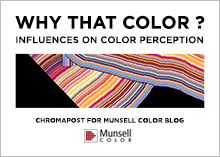
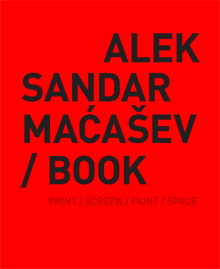







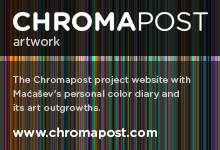
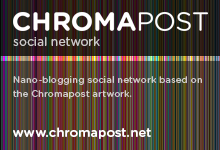
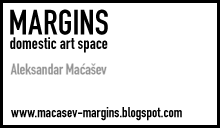



No comments:
Post a Comment